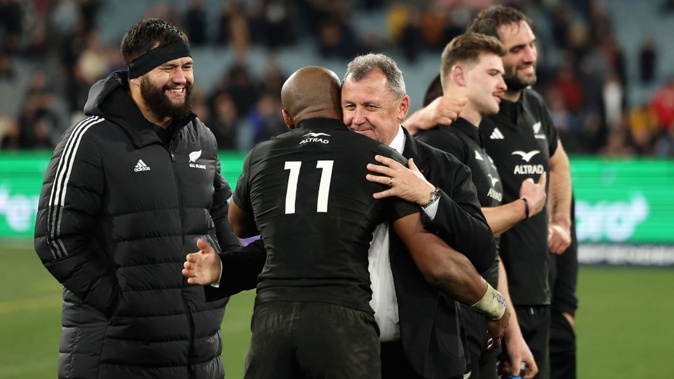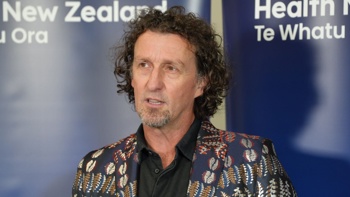
Forces on the head of community rugby players are often on par with or even lower than those experienced during general exercise, independent, peer-reviewed studies have found.
The findings, described as a game-changer for player safety in a World Rugby press release, provide a comprehensive perspective on the impact of head forces in both elite and community rugby.
It comes after it was announced in April that several former players from rugby union, rugby league and football were taking legal action against sports governing bodies on claims they suffered brain injuries during their careers. And in 2020, it was revealed ACC had shelled out almost $100 million for the treatment of sports-related concussion injuries over the past five years - with rugby by far the biggest contributor to the cost.
Using Prevent Biometrics instrumented mouthguards, the study measured more than 17,000 head acceleration events from 328 male community rugby players involved in Under 13s through to Premier grades. The mouthguards measure the g-forces on the head which are experienced by players in both training and games.
The Otago Community Head Impact Detection study (Orchid), a collaborative project between World Rugby, Prevent Biometrics, New Zealand Rugby, Otago Rugby, and the University of Otago, embarked on a nearly two-year-long research journey.
It was followed by the Elite Extension of the Orchid study in partnership with Ulster University and Premiership Rugby. Further updates into the women’s community game are being prepared for peer review and publication.
The results from the Orchid study have shattered some preconceived notions about rugby’s impact on players’ heads. According to the research:
- 86 per cent of forces experienced in the men’s community game are comparable to or less than those encountered during everyday activities like running, jumping, or skipping;
- 94 per cent of forces are lower than what was previously recorded on individuals riding a rollercoaster;
- Most events with the highest measured forces are the result of poor tackling techniques and breakdown situations.
These findings have the potential to revolutionise how rugby is perceived, emphasising that the community game poses minimal risks to players’ heads, challenging common misconceptions about the sport.
Moreover, the Elite Extension of the Orchid study highlighted the following key points:
- The majority of contact events in elite rugby do not result in significant head forces;
- When high-, medium- and low-force events do occur, they are most frequently seen in tackles and carries, followed by rucks;
- Forwards, both men and women, are more likely to experience force events than backs.
World Rugby chairman Sir Bill Beaumont lauded the results as a significant step forward in ensuring player welfare. “Using the latest research and technology is at the heart of our six-point plan to make rugby the most progressive sport in the world on player welfare. These studies are concrete proof that World Rugby is putting our time, energy, and efforts into backing up our words and the insights gained are already helping us make evidence-led moves to make the sport even safer. We will never stand still on player welfare.”
Dr Melanie Bussey, associate professor in biomechanics at the University of Otago, emphasised the value of the research and its potential to improve player safety. “Our ultimate goal as researchers is to make a meaningful impact through our work. We appreciate World Rugby’s approach, which granted us the time to ensure robustness in our analysis and the autonomy to let the data speak for itself.”
Dr Gregory Tierney, assistant professor in biomechanics at Ulster University, said, “These studies put in the groundwork so that we can now monitor player head impact exposure in rugby and develop strategies to ensure the game is played in the safest possible manner.”
The research has already influenced changes in rugby practices. Preliminary findings from the Orchid study were used to implement trials of a lower tackle height in the community game. In an international first, smart mouthguards will be integrated into the Head Injury Assessment (HIA) protocols from January 2024, further enhancing player safety measures.
Recent World Rugby-commissioned research has also revealed significant healthcare savings, reduced childhood obesity, lower heart disease rates, and decreased rates of mental illness among adults associated with playing rugby.
Head acceleration events
HAE events occur from the rapid acceleration or deceleration of the head that may occur in three different ways:
- Voluntary: Where the head accelerates or decelerates from running, changing direction or jumping, no contact is made to the head or the player’s body.
- Indirect: Generation when contact is made with the player’s body and the force travels up to the player’s head, resulting in movement of the head.
- Direct: Caused by direct contact to the head from another player or the ground.
Luke Kirkness is an online sports editor for the Herald. He previously covered consumer affairs for the Herald and was an assistant news director in the Bay of Plenty. He won Student Journalist of the Year in 2019.
Take your Radio, Podcasts and Music with you









